
20070323
We live right next to Elliot Bay in Seattle. The location affords us a great view of the comings and goings of grain ships that take on cargo at the Seattle Grain Port just north of our apartment. One overcast morning (which is most mornings) I saw the tugs approaching the docks. This could only mean one thing -- a changing of the guard at the loading dock. So, I grabbed my 1Ds camera and bike and peddled north. The wind was strong and cold making it less that pleasant outside. The photos below are what I saw.

Lone pleasure craft crosses Elliot Bay at sunset. Bainbridge Island in the background.
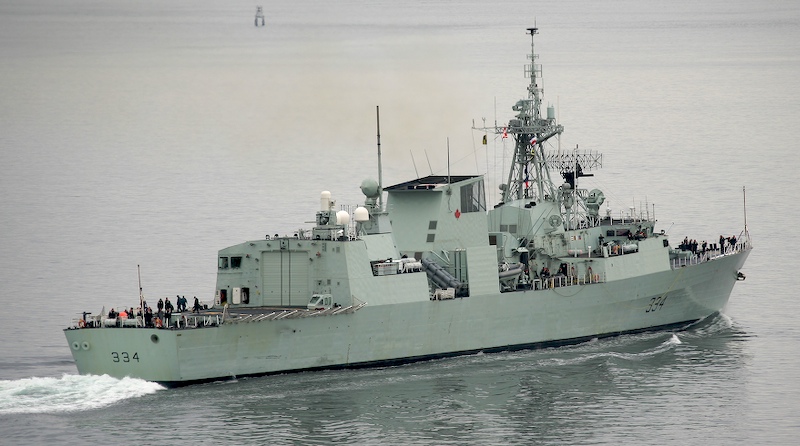
Canadian warship leaving Elliot Bay. Note the machine gun on the stern on the far left of the photo.
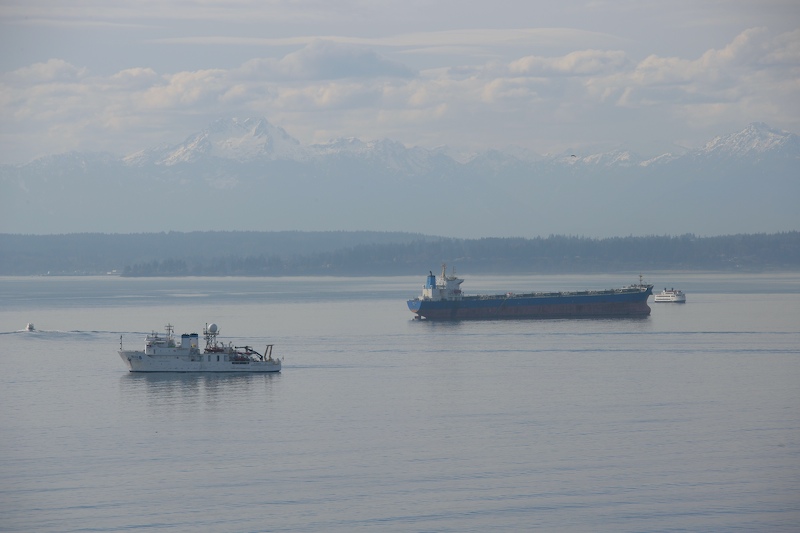
NOAA research ship in the foreground with grain ship and the Bainbridge Ferry. Olympic Mountains in the background.
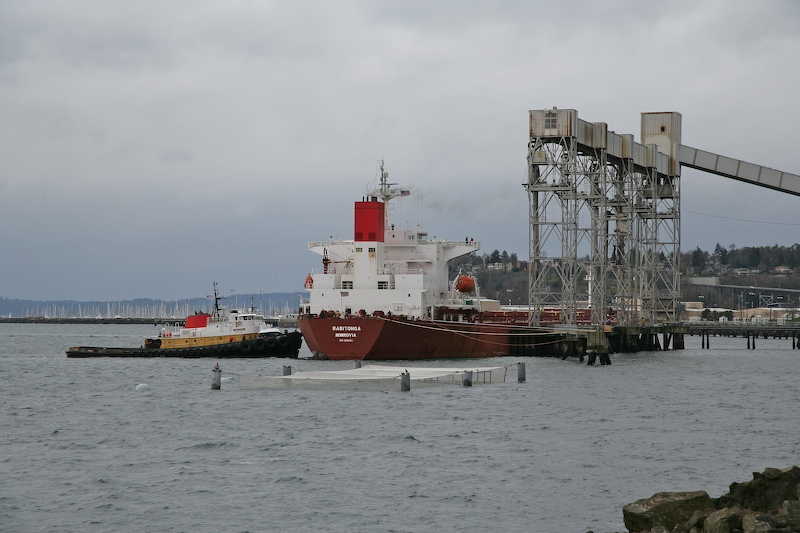
Grain ship "Babitonga" preparing to cast off. Note tug at left.
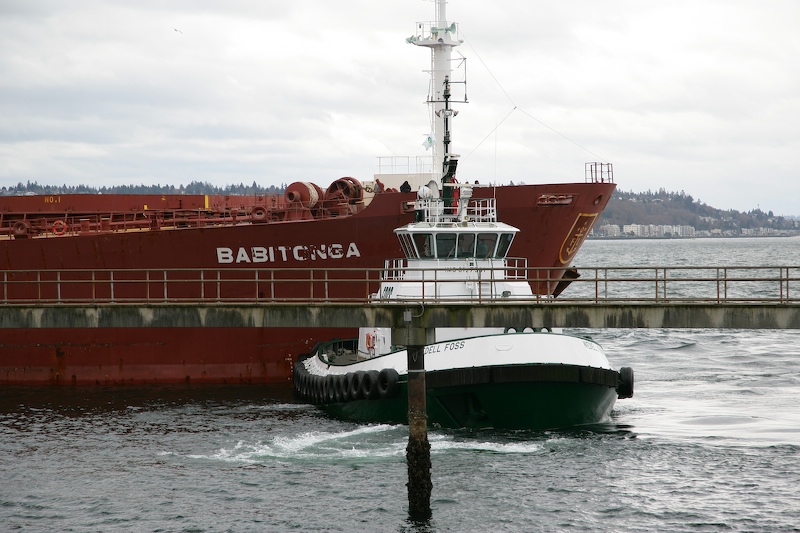
Tug rotating Babitonga into sea-going position.
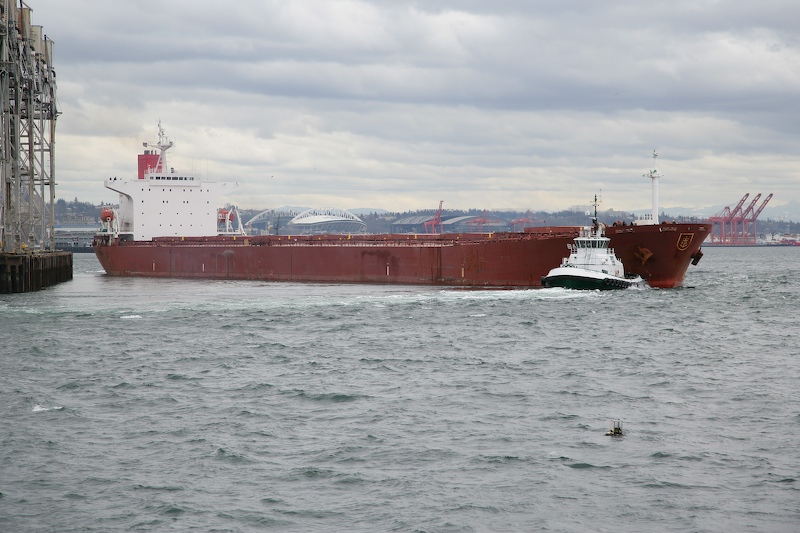
Rotation nearly complete. Note stadiums and cranes in the distance.
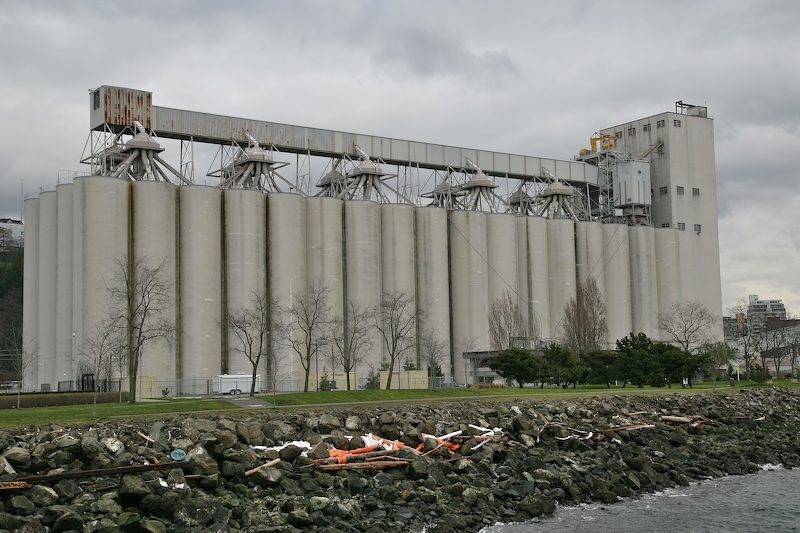
Grain storage facility. Grain arrives via train, both day and night. The cars are dumped into an underground hopper and then the grain is lifted into the appropriate silo. The network of conveyor belts and pipes carry the grain.
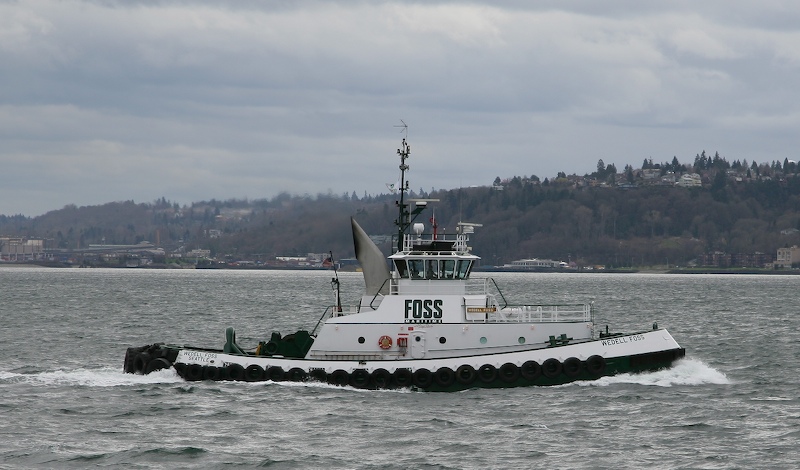
Done with the Babitonga, tug "Weddel Foss" prepares to assist Red Lily into position at the dock.
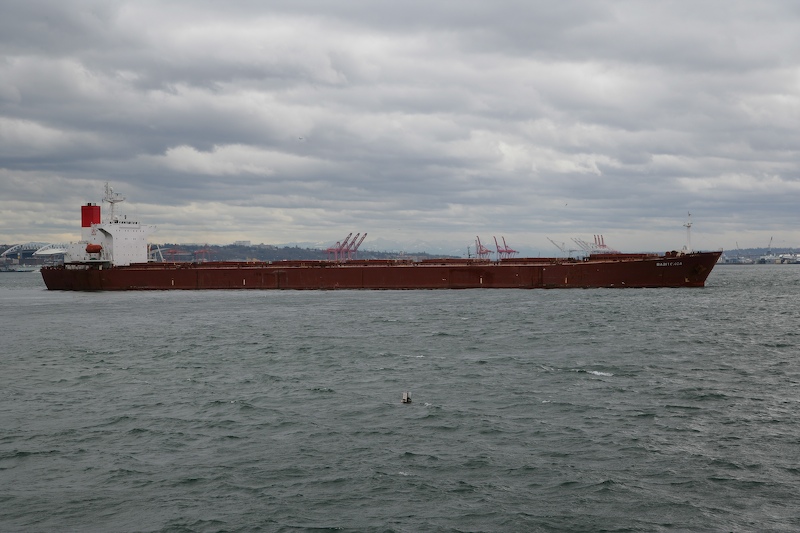
Babitonga is a big ship. This view gives a sense of the length of the ship. Note the red escape pod under stacks at rear of ship.
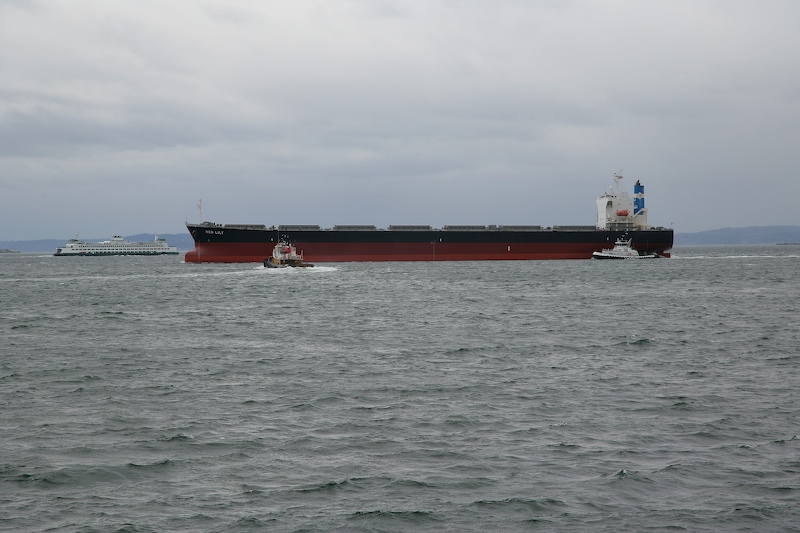
Red Lily incoming to dock.
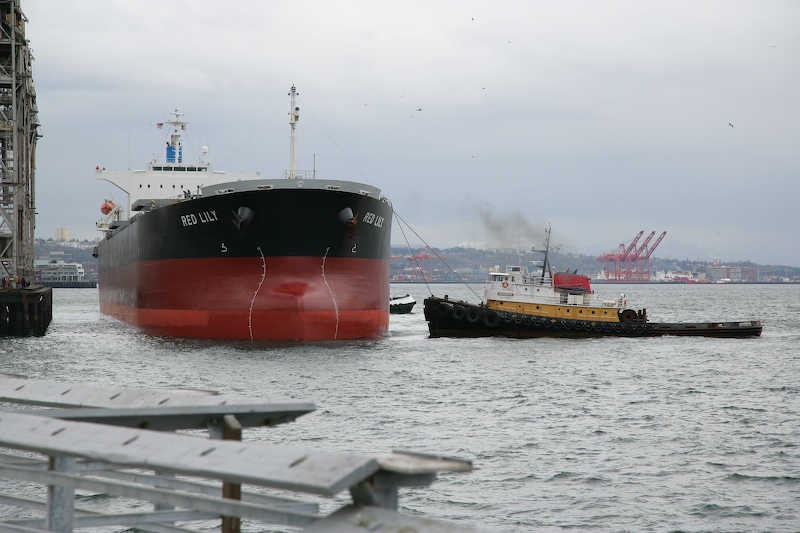
The tugs made short work of turning the ship around. Crewmen are visible on the deck to give a sense of scale.
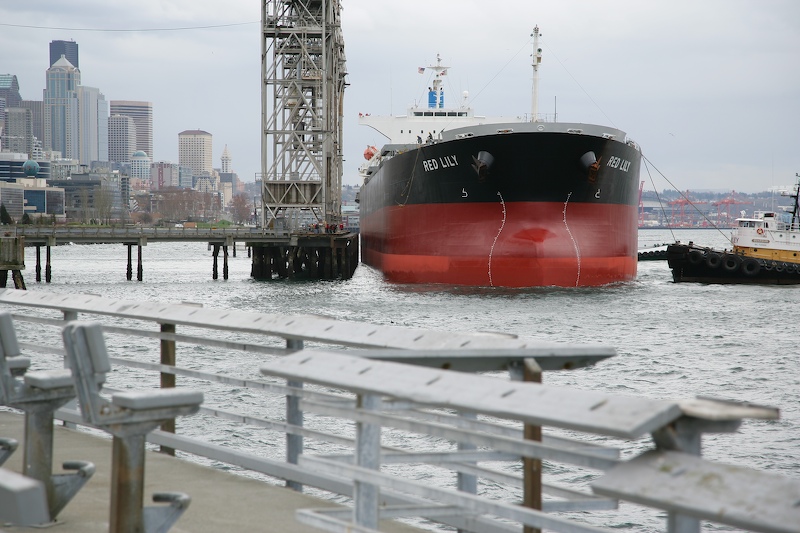
Nearly complete with docking sequence.
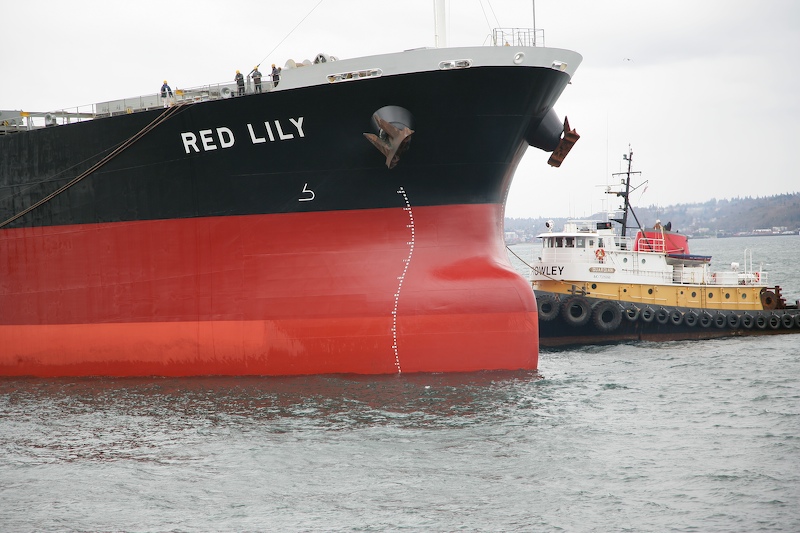
Crewmen on deck give scale to the scene.
This was a cold, windy day which made being outside somewhat uncomfortable. But, adverse weather notwithstanding, it was cool to watch the team undock and redock a ship. The whole process took less than 30 minutes for both ships once the process got started. These ships are large and the loading process takes many days. When a new ship arrives at the terminal, it is greeted by a string of grain trains bringing cargo to load. It looks to me like it takes 5-7 train loads to fill a ship.